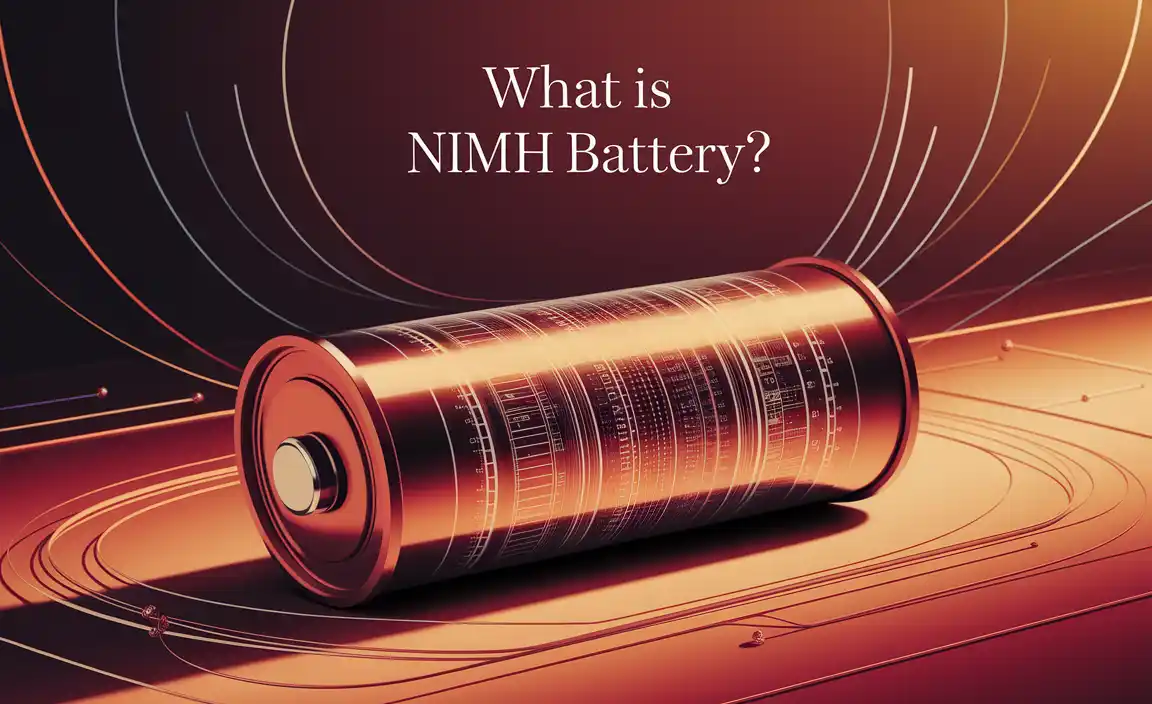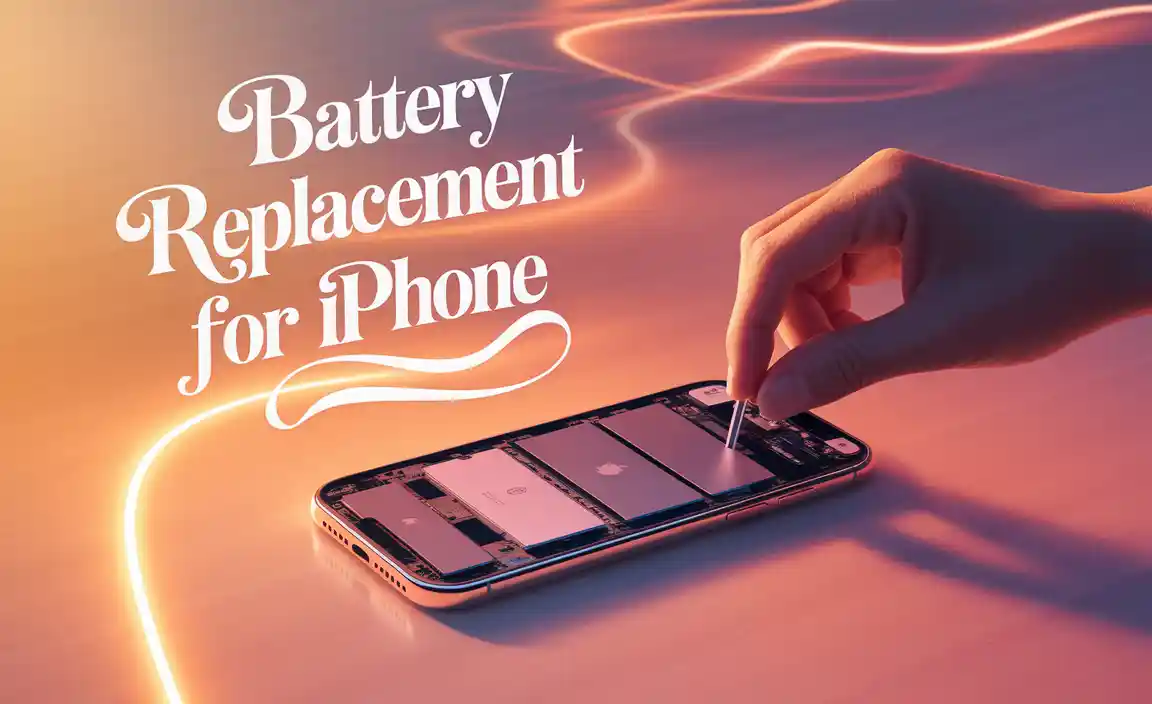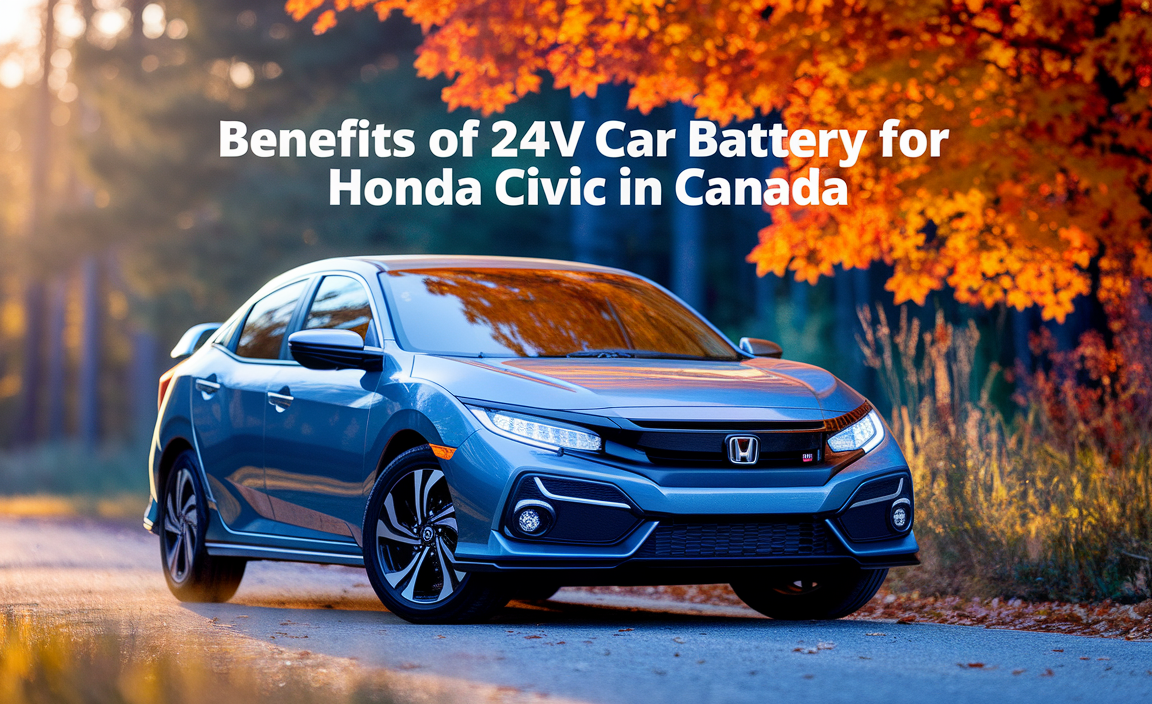AGM stands for Absorbed Glass Mat. An AGM battery is a type of lead-acid battery that uses special compressed mats of glass fibers to absorb the electrolyte. This design makes them spill-proof, vibration-resistant, and more efficient than traditional batteries, making them a popular choice for cars, RVs, and backup power systems.
Ever popped the hood of your car or looked at the back of a power bank and seen a battery with “AGM” on it? You might wonder what that actually means. Don’t worry, you’re not alone! Many of us rely on these batteries every day without knowing exactly what makes them special. Understanding what AGM stands for and how these batteries work can save you confusion and help you make smarter choices when it’s time to replace one or choose a new power solution. We’ll break down what AGM means in simple terms and why it matters for your car, your electronics, and your peace of mind.
What Does AGM Stand For Battery? The Simple Answer
AGM is short for Absorbed Glass Mat. That might sound a bit technical, but let’s break it down simply.
Think of a regular car battery. It has liquid acid sloshing around inside. An AGM battery is different. Instead of loose liquid, the acid is soaked up – or absorbed – into special mats made of very fine glass fibers. These mats are packed tightly between the lead plates inside the battery.
This unique design gives AGM batteries some really useful advantages:
- Spill-proof: Because the acid is held in the glass mats, it can’t leak out easily, even if the battery is tipped or damaged.
- Vibration resistant: The compressed glass mats help hold the plates firmly in place, making AGM batteries tougher against bumps and shakes, which is great for cars.
- Better performance: They can often deliver more power, recharge faster, and last longer than traditional flooded batteries.
So, when car manufacturers or tech companies talk about AGM, they’re referring to this advanced type of battery technology that offers better safety and performance.
Why AGM Batteries Are Becoming So Popular
You’re seeing “AGM” more and more because these batteries are designed to meet the demands of modern vehicles and electronics. Cars today have more power-hungry accessories like GPS, advanced sound systems, heated seats, and lots of sensors. These systems need a battery that can deliver consistent power and handle frequent starts and stops.
AGM batteries are also great for:
- Start-stop systems: Many newer cars automatically turn off the engine when you stop and restart it when you move. This puts a lot of strain on a battery, and AGMs are built to handle that.
- High-performance vehicles: If you have a car that needs a lot of cranking power, an AGM can provide it.
- Backup power: They’re excellent for uninterruptible power supplies (UPS) for computers, home security systems, and even solar power setups because they’re reliable and safer.
- Motorcycles and powersports: Their vibration resistance and spill-proof nature make them ideal for bikes, ATVs, and boats.
Basically, if you need a battery that’s tough, reliable, and can handle demanding tasks, an AGM is often the go-to choice.
AGM vs. Traditional Flooded Batteries: Key Differences
To really understand why AGM batteries are special, it helps to see how they compare to the older, more common type of car battery – the flooded lead-acid battery. You know, the ones with little caps on top where you might have checked the water level years ago.
| Feature | AGM Battery | Traditional Flooded Battery |
|---|---|---|
| Electrolyte Storage | Absorbed into fine glass fiber mats | Liquid form, free to move |
| Spill Resistance | Very high – spill-proof design | Low – can spill if tipped or damaged |
| Vibration Resistance | Excellent – glass mats keep plates secure | Moderate – plates can be more exposed |
| Recharge Rate | Faster, can accept more charge | Slower, can be less efficient |
| Maintenance | Maintenance-free (no water topping up needed) | Requires periodic checking and topping up with distilled water |
| Deep Discharge Capability | Generally better at recovering from deep discharges | Can be damaged more easily by deep discharges |
| Cost | Typically higher upfront cost | Lower upfront cost |
| Lifespan | Often longer, especially in demanding applications | Good, but can be shorter in harsh conditions |
As you can see from the table, AGM batteries offer a lot of benefits, especially in terms of safety, durability, and performance under tough conditions. While they might cost a bit more upfront, many find the longer lifespan and reduced maintenance make them a worthwhile investment.
How AGM Batteries Work: A Closer Look
Let’s dive a little deeper into the technology that makes AGM batteries so effective.
At its core, an AGM battery is still a lead-acid battery. This means it uses lead plates and an electrolyte solution – a mixture of sulfuric acid and water – to create electricity. The magic of AGM lies in how this electrolyte is managed.
Inside an AGM battery:
- Positive and Negative Plates: Just like any battery, there are alternating positive and negative plates made of lead or lead alloys.
- Glass Mats: Between these plates are separators made of fine, woven glass fibers. These mats act like sponges.
- Absorbed Electrolyte: The sulfuric acid solution is absorbed into these glass mats. The mats are designed to hold a precise amount of electrolyte, leaving tiny pockets of air. This setup allows the battery to breathe and handle the chemical reactions needed to produce and store power.
- Internal Pressure: Because the electrolyte is absorbed and the battery is sealed (with vents for safety), it can operate in almost any position without leaking acid. This is a huge advantage over traditional batteries.
When you connect a device or your car’s engine starts, a chemical reaction happens between the lead plates and the absorbed electrolyte. This reaction releases electrons, creating an electrical current. When you charge the battery, the process reverses. The sealed design means that very little water is lost over time, which is why they are often called “maintenance-free.”
Can I Use an AGM Battery in My Car if It Didn’t Come With One?
This is a great question many car owners ask. For many modern vehicles, yes, you can absolutely upgrade to an AGM battery, even if your car originally came with a traditional flooded battery.
Here’s what to consider:
- Check Your Owner’s Manual: The safest bet is always to consult your car’s owner’s manual. It will tell you what type of battery is recommended or required.
- Modern Car Systems: If your car has advanced features like start-stop technology, regenerative braking (where the car captures energy when you slow down), or a lot of complex electronics, it’s likely designed to work best with an AGM battery, or at least benefit greatly from one. In some cases, these systems might not function correctly with a standard flooded battery because they require the stable power output and better deep-cycle capabilities that AGMs provide.
- Battery Size and Terminals: Make sure the AGM battery you choose is the correct physical size for your car’s battery tray and that the terminal posts are in the same location and type as your old battery.
- Charging System Compatibility: Most modern car charging systems (alternators) are compatible with AGM batteries. However, older vehicles or those with very basic charging systems might not charge an AGM optimally. Again, checking your manual or consulting a mechanic is wise.
The Benefits of Upgrading:
Upgrading to an AGM can offer improved reliability, longer life, and better performance, especially in cars with demanding electrical systems. It’s like giving your car a dependable power upgrade!
How to Install an AGM Battery in Your Car: A Step-by-Step Guide
Replacing your car battery might seem intimidating, but it’s a manageable DIY task if you’re careful. Here’s a straightforward guide to installing an AGM battery. Safety first is always the rule!
Tools and Materials You’ll Need:
- New AGM battery (correct size and type for your car)
- Wrench set or socket set (usually 10mm and 13mm for most cars)
- Gloves (acid-resistant are best)
- Safety glasses
- Wire brush or battery terminal cleaner
- Battery terminal protector spray or grease (optional but recommended)
- Pliers (sometimes needed for stubborn clamps)
- A clean cloth or paper towels
Steps for Battery Replacement:
- Park Your Car Safely: Park your car on a level surface and ensure the parking brake is firmly engaged. Turn off the engine completely. For extra safety, disconnect any aftermarket electronic devices that draw constant power (like an alarm or dashcam) to avoid draining your car’s computer memory. You might want to have a jump starter or a spare battery to maintain power to the car’s computer if you plan to disconnect the battery for a long time, though many modern cars are fine with a brief disconnection.
- Locate the Battery: Open the hood and find the battery. It’s usually on one side of the engine bay.
- Disconnect the Negative Terminal First: This is CRUCIAL for safety. Using your wrench, loosen the nut on the clamp holding the black cable (the negative terminal, often marked with a “-“). Once loose, gently twist and lift the cable off the battery post. Tuck it away so it can’t accidentally touch the battery post.
- Disconnect the Positive Terminal: Now, loosen the nut on the clamp holding the red cable (the positive terminal, often marked with a “+”). Remove this cable and set it aside.
- Remove the Battery Hold-Down Clamp: Most batteries are held in place by a clamp at the base or a bracket across the top. Unscrew and remove whatever is securing your battery. Keep these parts safe.
- Remove the Old Battery: Carefully lift the old battery straight up and out of the battery tray. Batteries are heavy, so be sure to lift with your legs and keep your back straight. If it’s too heavy, ask for help.
- Clean the Battery Tray and Terminals: Use a wire brush or terminal cleaner to clean the battery tray and the cable clamps. Make sure they are free of corrosion and dirt for a good connection. You can also clean the new battery terminals.
- Place the New AGM Battery: Carefully lower the new AGM battery into the battery tray, making sure it’s oriented correctly (positive and negative terminals in the right spots).
- Secure the Battery: Reinstall and tighten the battery hold-down clamp or bracket to keep the new battery firmly in place.
- Connect the Positive Terminal First: Place the red cable clamp onto the positive (+) terminal post of the new battery. Tighten the nut securely with your wrench.
- Connect the Negative Terminal Last: Place the black cable clamp onto the negative (-) terminal post. Tighten the nut securely.
- Apply Terminal Protector (Optional): Spray a battery terminal protector or apply a thin layer of grease onto the terminals and clamps. This helps prevent corrosion.
- Double-Check Everything: Ensure all connections are tight and the battery is secure.
- Start Your Car: Close the hood and start your car. It should start up normally. Your car’s computer may need to relearn some settings (like idle speed or radio presets) after the battery was disconnected, which is usually normal.
Important Safety Note: Car batteries contain sulfuric acid, which is corrosive, and they can produce flammable gases. Always wear safety glasses and gloves. Work in a well-ventilated area. If you’re unsure at any step, it’s best to have a professional mechanic handle the battery replacement.
AGM Batteries in Other Applications: Beyond the Car
While we’ve focused a lot on cars, AGM battery technology is incredibly versatile and used in many other areas where reliable power is essential.
Powering Your Home and Devices
- Uninterruptible Power Supplies (UPS): When the power goes out, a UPS uses an AGM battery to keep your computer, modem, or other vital electronics running. This prevents data loss and keeps you connected.
- Emergency Lighting: Many emergency exit signs and building emergency lights rely on AGM batteries to ensure they work when needed most.
- Solar Power Systems: For off-grid solar setups or home battery backups, AGM batteries are a popular choice for storing energy captured from solar panels. They offer a good balance of performance, lifespan, and cost for these deep-cycle applications. You can learn more about deep-cycle batteries from resources like the U.S. Department of Energy’s page on battery technologies which touches on different battery functions.
Powersports and Recreation
The ruggedness of AGM batteries makes them perfect for vehicles that endure a lot of jolts and shakes:
- Motorcycles and Scooters: They handle vibrations well and are spill-proof, which is vital on two wheels.
- ATVs and UTVs: These vehicles often operate in dusty, bumpy environments, making AGM’s durability a huge asset.
- Boats and RVs: Whether it’s starting the main engine or powering accessories in the living quarters, AGM batteries provide reliability on the water and on the road.
Other Uses
- Electric Mobility Devices: Scooters and wheelchairs used by people with mobility challenges often use AGM batteries for their dependable power.
- Security Systems: As backup power for home and business alarms, AGM batteries ensure that systems remain operational even during a power outage.
The common thread for all these applications is the need for a battery that is safe, reliable, long-lasting, and can perform consistently. AGM technology fits the bill for many of these demanding roles.
AGM Battery Care and Maintenance: Keeping It Healthy
One of the biggest selling points of AGM batteries is that they are often marketed as “maintenance-free.” This is largely true, especially compared to traditional flooded batteries. However, that doesn’t mean you can completely ignore them. A little bit of attention can help maximize their lifespan and performance.
What “Maintenance-Free” Really Means:
For most users, “maintenance-free” means you don’t have to open the battery to check or add water. This is because the sealed design prevents the electrolyte from evaporating under normal operating conditions. This makes them safer and cleaner to handle.
Tips for Keeping Your AGM Battery in Great Shape:
- Ensure Proper Charging: This is the most important factor for any battery, including AGMs.
- Use the Right Charger: If you’re using a dedicated AGM charger, that’s great! If you’re using a multi-stage charger, make sure it has an AGM setting. Charging at the wrong voltage can damage the battery. Many modern car alternators are designed to charge AGMs correctly, but it’s worth being aware of.
- Avoid Overcharging: Overcharging can cause excessive heat and damage the internal components of an AGM battery. A good charger will prevent this.
- Avoid Deep Discharges: While AGMs are better than flooded batteries at handling deep discharges, consistently draining them completely can still shorten their lifespan. Try to recharge them before they get critically low.
- Keep Terminals Clean: Even though they are sealed, corrosion can still build up on the battery terminals and cable clamps over time. This can impede the flow of electricity and affect performance. Periodically (every 6-12 months is a good rule of thumb), check the terminals. If you see any white or bluish powdery buildup, clean them gently with a wire brush and a mixture of baking soda and water, or use a dedicated battery terminal cleaner. Rinse with clean water and dry thoroughly.
- Tighten Connections: Ensure the battery cables are securely fastened to the battery terminals. Loose connections can cause all sorts of electrical gremlins and prevent the battery from charging or delivering power effectively.
- Protect Against Extreme Temperatures: While AGMs are generally more resistant to temperature fluctuations than flooded batteries, extreme heat and cold can still affect their performance and lifespan. If possible, try to keep your battery in a temperature-controlled environment, especially during very hot summers or freezing winters. In a car, the engine bay provides some insulation, but extreme conditions can still take a toll.




